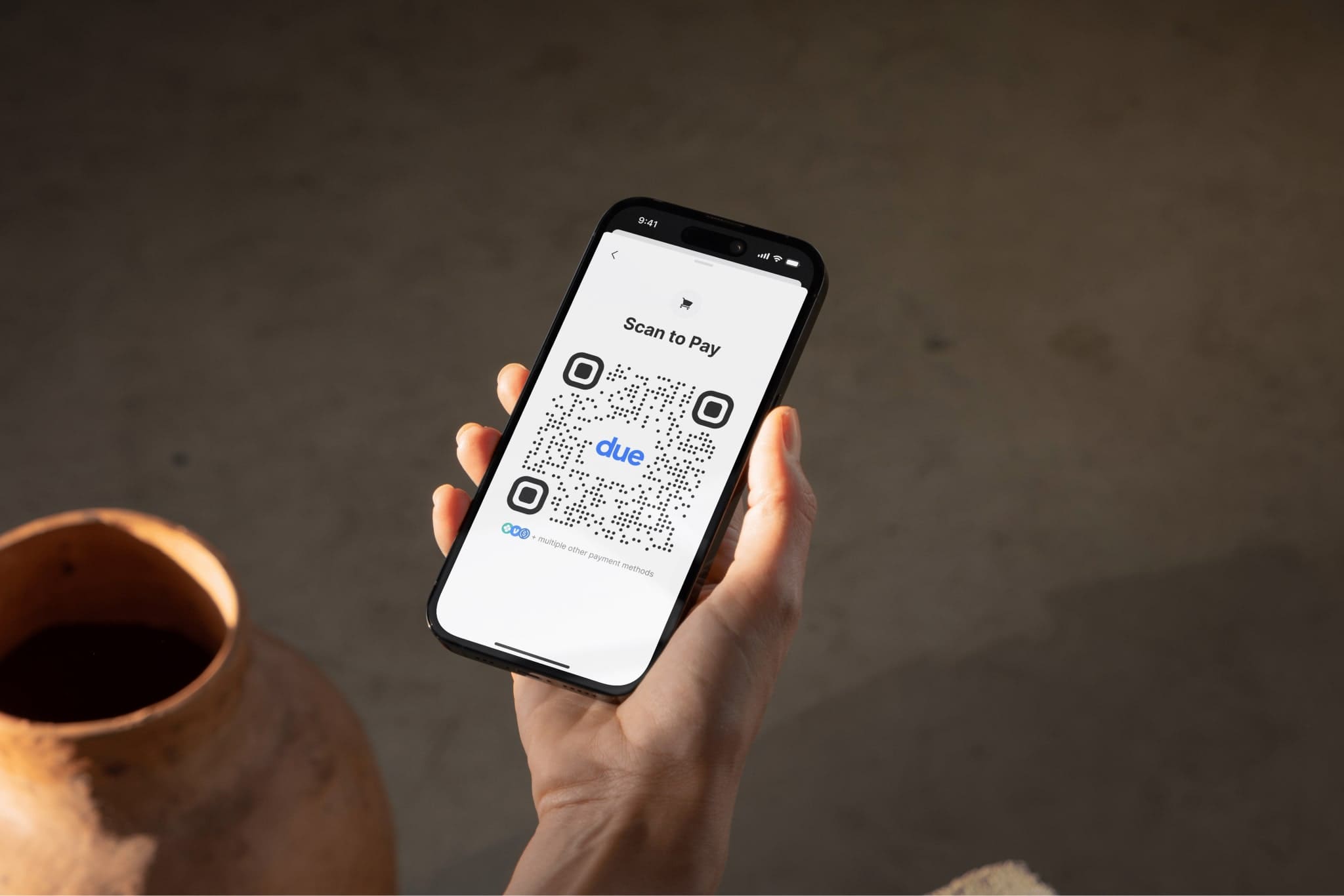
How to Receive International Payments as a Freelancer in 2025
- Freelancers in 2025 need faster, fairer ways to get paid globally. Legacy methods like SWIFT and PayPal remain reliable but slow and fee-heavy, often eroding margins through hidden FX spreads.
- Modern options such as multi-currency accounts and stablecoin payments enable instant or same-day settlement, transparent pricing, and control over conversions, helping freelancers collect “like locals” in multiple markets.
- A hybrid setup wins: pair a borderless account for local rails (IBAN, ACH, PIX) with stablecoin rails (USDC, EURC) for time-sensitive payments, keeping fees low, records clean, and cash flow predictable.
If you work across borders, you already know the ache: days-long waits, exchange-rate surprises, and fees that nibble away at hard-won margins. For independent professionals, the question isn’t simply how to receive international payments as a freelancer; it’s how to do it without losing time or trust. Traditional rails (SWIFT wires, cards) still move a lot of money, but 2025'’s freelancers need options that are fast, transparent, and fair.
In this guide, we’ll compare secure freelancer payment methods, from classic bank wires to multi-currency accounts and stablecoin payments, so you can get paid globally as a freelancer with less friction and more control. We’ll close with practical playbooks you can use immediately. Global averages for remittances remain ~4–6% depending on corridor and amount, which is exactly why a smarter, modern stack matters.
Traditional methods of receiving payments
Freelancers and global businesses have long relied on established networks like SWIFT and PayPal to collect international payments, systems that prioritise reach and reliability but often trade off speed and cost efficiency.
SWIFT transfers: reliable, but slow and fee-heavy
The bank-to-bank SWIFT network is everywhere and compatible with nearly any client finance department. But settlement typically lands T+1 to T+3, and fees stack: your bank, the client’s bank, and any correspondent banks in between. In response to pressure from faster alternatives and policy targets to cut cross-border friction, Swift itself is racing to modernise, pushing ISO 20022 adoption and new frameworks for instant retail settlement. Even so, freelancers still experience both delay and opacity on legacy rails in many corridors.
PayPal & similar platforms: popular, easy, but pricey in practice
PayPal wins on brand recognition and a familiar checkout flow. Yet international transfers can carry percentage fees plus currency-conversion markups, typically in the 3–4% range for FX. For many freelancers, that blend exceeds what they expect, especially at scale. Read the fine print: for U.S. users, sending or receiving cross-border can involve 5% send fees (caps apply) plus card surcharges and FX spreads. When every basis point counts, those layers add up, pushing many to low-fee freelancer accounts with transparent pricing and fair FX instead of bundled markups.
Modern options for receiving payments globally
As cross-border work becomes the norm, freelancers and businesses are turning to smarter, faster tools that bridge traditional banking with digital finance, offering more control, transparency, and flexibility than legacy systems ever could.
Multi-currency accounts for freelancers: fewer surprises, more control
A well-designed multi-currency account lets you invoice and hold balances in EUR, GBP, USD (and more) while choosing when to convert. Due’s Global Accounts are built for this world: you can generate local receiving details (e.g., IBAN, ACH, PIX, NUBAN) in multiple markets, collect like a local, then convert or pay out via local rails or stablecoins. That means you can reduce FX churn and keep invoices native to your client’s market.
Real-world vignette: A designer in Warsaw bills a Paris client in EUR to an IBAN issued in-app, holds the balance through month-end, then pays her developer in Mexico via SPEI, no extra accounts, no surprise spreads. Settlement on local rails is typically instant or same-day, and international via SWIFT remains available when needed.
Stablecoin transfers: instant settlement with audit-ready transparency
If your clients are crypto-friendly (or simply want faster settlement), stablecoins such as USDC and EURC solve for speed and auditability. They’re fully reserved, redeemable 1:1 into their underlying fiat, and run on mainstream networks. With Due, you can accept USDC/EURC, hold or convert, and route payouts globally over local rails or SWIFT. For euro work, EURC is particularly relevant: minted under Europe’s e-money regime, redeemable 1:1, and increasingly used for real-time payouts.
Why it’s practical in 2025: Dollar assets still dominate global reserves (~58%), while the euro sits near 20%. That imbalance shows up in the stablecoin market as well, which is why EURC’s share is small but growing, useful for freelancers who price in euros and want to keep FX risk aligned with their cost base.
Local payout options & digital wallets: meet clients where they are
In many regions, real-time systems (SEPA Instant in the EU, Faster Payments in the UK, PIX in Brazil, UPI in India) and popular wallets (e.g., M-Pesa in East Africa, GCash in the Philippines) are how business is actually done. Due connects to local rails across 80+ markets and can also reach 150+ countries via SWIFT. Practically, you can receive funds locally or in stablecoins, then cash out to bank accounts or mobile money, often in 24 hours or less.
Pros and cons of each method
Sources: Swift timelines and upgrade path; PayPal fee structure; Due coverage of 80+ local rails and 150+ countries via SWIFT; EURC/USDC 1:1 redeemability.
Best way to get paid as a freelancer in 2025
1) Diversify your rails (bank + stablecoin)
Why it matters: When you evaluate freelancer payout methods 2025, note that SWIFT has materially improved speed; its own data indicates 75% of payments now reach the beneficiary bank within 10 minutes, but "last-mile" frictions at receiving institutions can still delay final credit. New network rules announced on 25 September 2025 aim to make retail cross-border payments more predictable, yet variability remains, so keeping a second rail in your stack still pays.
How to run it:
- Maintain two independent routes:
(A) multi-currency/borderless account with local receiving details;
(B) a stablecoin settlement flow you can invoke on demand (with pre-agreed wallet whitelists and conversion policy). - Health-check both rails weekly with small test receipts; track time-to-credit, fail rates, and freeze/escalation incidents.
- Set a written failover rule, e.g., “If T+1 credit not confirmed or compliance flags appear, route next invoice to stablecoin; convert within 15 minutes of confirmation.”
Example (Europe→Brazil): Primary = SEPA→local BRL via your provider. If the corridor clogs, invoice in EUR but settle in EURC/USDC, receive confirmations in minutes, then cash out to BRL via licensed off-ramp/PSP. (Brazil’s Pix rails are deep and fast; the central bank publishes monthly volumes and just rolled out Pix Automático for recurring payments in 2025.)
2) Quote and check currency costs upfront
Why it matters: Finance teams accept “modern rails” faster when the math is transparent. Global remittance monitoring shows that small cross-border payments still carry meaningful costs (World Bank’s tracked averages were ~6.5% in recent reporting.
3) Use borderless accounts (local details; convert when you choose)
What “borderless” means in practice: Local receiving identifiers by corridor, IBAN/SEPA for EUR, ACH (routing/account) for USD, PIX for Brazil, NUBAN (10-digit standard) for Nigeria, so clients “pay local” and you hold balances until you decide to convert. ACH offers multiple aily settlements (including Same Day windows), and NUBAN is the Central Bank of Nigeria’s uniform 10-digit format.
Tooling reality: Multi-currency “borderless” accounts from established fintechs let you receive, hold and convert in many currencies with local details; this is an accepted pattern. Use whatever is in policy for the client.
Ops tip: Enforce unique payment references per invoice; auto-reconcile on arrival; tag balances by project so PMs see funds ready for payouts.
4) Consider stablecoins for settlement, then cash out
When it helps: If a client can pay USDC/EURC, you get on-chain confirmation quickly and can convert to local currency through approved off-ramps. EURC (issued by Circle) is publicly described as 1:1 redeemable for euros and MiCA-compliant; that framing often accelerates approvals for EU finance teams. Document custody (hosted vs self-custody), accepted chains, conversion window, and AML screening.
Provider example (for positioning only): Due markets a stablecoin payments API plus fiat rails (collect via ACH/SEPA/PIX, convert to USDC/EURC, and vice-versa). If you reference it, attribute it clearly as the company’s own claims.
5) Keep records and stay tax-clean
What auditors look for: Match invoice #, client entity, currency, amount, timestamps, transaction IDs (bank references or on-chain hashes). Export statements (CSV/JSON) monthly and keep evidence packs (invoice PDF + payment proof + FX note + payout confirmation) for 5–7 years per your jurisdiction. If using ACH, note the actual settlement window (standard next-day vs Same Day) in the payment memo; for Brazil and Nigeria, store the Pix and NUBAN identifiers alongside.
The 2025 freelancer payments stack
In 2025, receiving international payments as a freelancer is not a single answer; it’s a stack. Use freelancer payment methods that fit the job and the market: pair multi-currency accounts and local rails with stablecoin settlement when speed and clarity matter. The result is simple: faster cash, fewer surprises, clean records, and more time to do the work you actually love. With Due, you can get paid globally as a freelancer at internet speed, with transparent pricing and rails that match how the world now moves money.
FAQ — Receiving International Payments As a Freelancer
What is the cheapest way to receive international payments as a freelancer?
Typically, a multi-currency account with local receiving details (IBAN/ACH/PIX) plus fair-FX conversion will beat legacy wires and wallet-based fees. With Due, cross-border B2B processing runs at 0.2–0.3%, merchant processing is under 1%, and FX spreads are typically 0.2–0.7%; for like-for-like currency transfers (no conversion), payout costs are usually under $0.50. Always compare against the publicly posted fee tables you and your client actually use.
Which is better for freelancers: PayPal or multi-currency accounts?
For client convenience, PayPal can be fine; for margin, multi-currency accounts usually win, fewer FX markups and faster local settlement. PayPal’s international sends can involve 5% plus card/FX costs; a borderless account often avoids that stack.
Can freelancers get paid in stablecoins?
USDC and EURC are each redeemable 1:1 with their own fiat (USD and EUR). USDC↔EURC conversions are not 1:1; they follow the market EUR/USD rate plus a spread. With Due, you can accept stablecoins on major networks and cash out via local rails or SWIFT, with the rate and fees shown before you confirm.
How do international clients usually pay freelancers?
Still a mix, bank wires and card wallets, but 2025 tilts toward local instant rails (SEPA Instant, Faster Payments, PIX) and, in compliant corridors, stablecoins. The simplest way to meet clients where they are is to offer local bank details, IBAN, ACH (account & routing), CLABE, PIX, NUBAN, and GBP account number/sort code — in 50+ countries, so they can pay you “like a local.” On Due, those details sit alongside coverage across 80+ markets, EURC→EUR payouts via SEPA (instant where supported) or SWIFT to 150+ countries, plus USDC→USD via ACH or SWIFT. Net result: clients use what’s easy; you keep fair-FX control, clear fees, and predictable timing.
What’s the safest way for freelancers to get paid globally?
Use verified accounts, clear invoices, and rails with audit trails. Non-custodial settlement (you hold keys) plus regulated coverage (e.g., FINTRAC-registered MSB in Canada, EU VASP entities) adds trust for both sides. Keep documentation exportable for tax compliance.
- Remittance Prices Worldwide — Issue 53 (March 2025)
- PayPal Consumer Fees (U.S.)
- The International Role of the U.S. Dollar — 2025 Edition (Federal Reserve, July 18, 2025)
- ISO 20022 for Financial Institutions: Focus on Payments Instructions (Swift)
- Spotlight on Speed 2025 (Swift)
- PIX Statistics (Banco Central do Brasil)
- Remittance Prices Worldwide — Homepage





